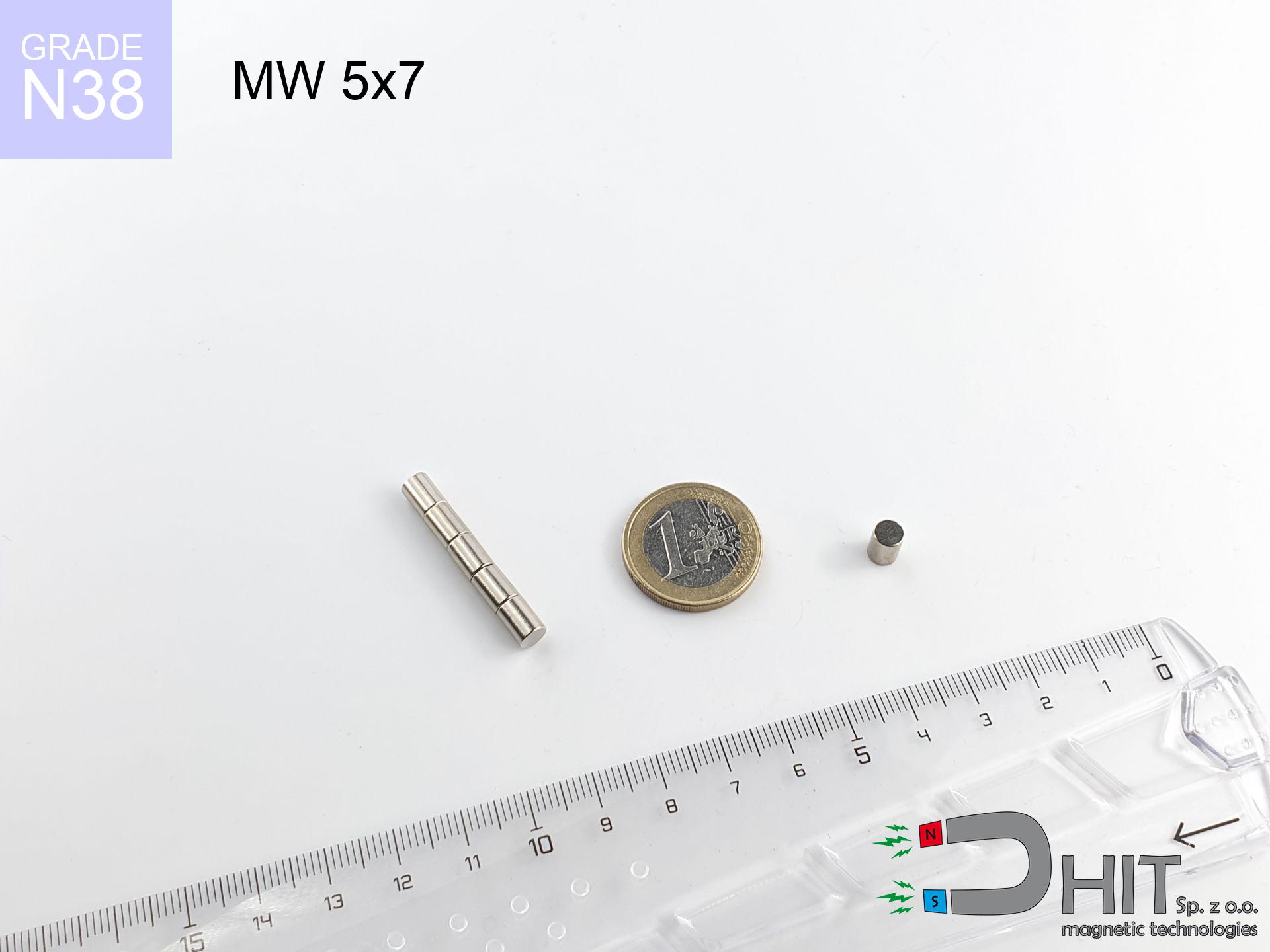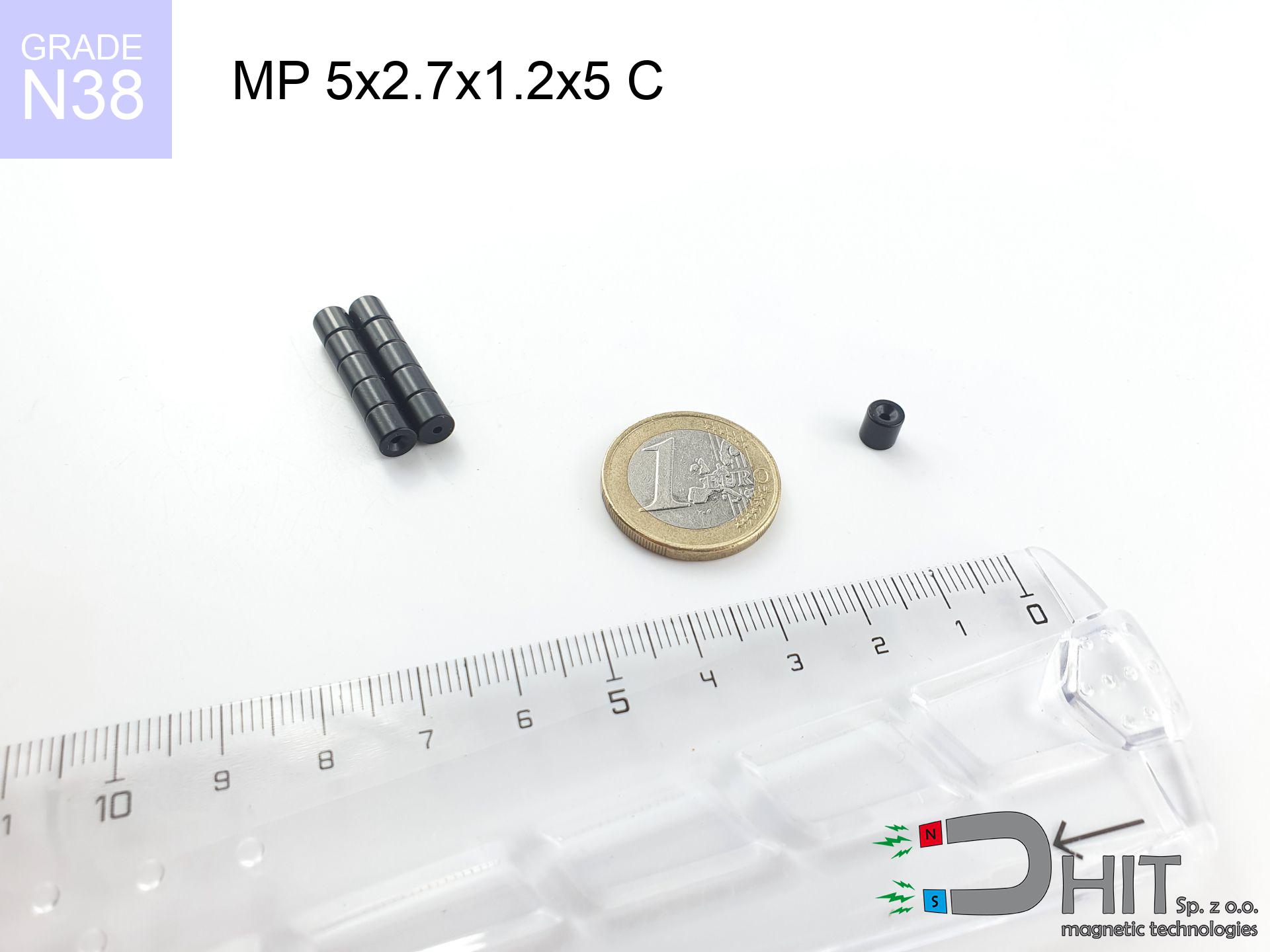SM 32x350 [2xM8] / N42 - magnetic separator
magnetic separator
Catalog no 130301
GTIN/EAN: 5906301812944
Diameter Ø
32 mm [±1 mm]
Height
350 mm [±1 mm]
Weight
1870 g
Magnetic Flux
~ 8 000 Gauss [±5%]
1045.50 ZŁ with VAT / pcs + price for transport
850.00 ZŁ net + 23% VAT / pcs
bulk discounts:
Need more?
Call us now
+48 888 99 98 98
alternatively contact us by means of
contact form
the contact page.
Strength along with appearance of magnets can be analyzed using our
magnetic calculator.
Same-day shipping for orders placed before 14:00.
Technical of the product - SM 32x350 [2xM8] / N42 - magnetic separator
Specification / characteristics - SM 32x350 [2xM8] / N42 - magnetic separator
| properties | values |
|---|---|
| Cat. no. | 130301 |
| GTIN/EAN | 5906301812944 |
| Production/Distribution | Dhit sp. z o.o. |
| Country of origin | Poland / China / Germany |
| Customs code | 85059029 |
| Diameter Ø | 32 mm [±1 mm] |
| Height | 350 mm [±1 mm] |
| Weight | 1870 g |
| Material Type | Stainless steel AISI 304 / A2 |
| Magnetic Flux | ~ 8 000 Gauss [±5%] |
| Size/Mount Quantity | 2xM8 |
| Polarity | circumferential - 13 poles |
| Casing Tube Thickness | 1 mm |
| Manufacturing Tolerance | ±1 mm |
Magnetic properties of material N42
| properties | values | units |
|---|---|---|
| remenance Br [min. - max.] ? | 12.9-13.2 | kGs |
| remenance Br [min. - max.] ? | 1290-1320 | mT |
| coercivity bHc ? | 10.8-12.0 | kOe |
| coercivity bHc ? | 860-955 | kA/m |
| actual internal force iHc | ≥ 12 | kOe |
| actual internal force iHc | ≥ 955 | kA/m |
| energy density [min. - max.] ? | 40-42 | BH max MGOe |
| energy density [min. - max.] ? | 318-334 | BH max KJ/m |
| max. temperature ? | ≤ 80 | °C |
Physical properties of sintered neodymium magnets Nd2Fe14B at 20°C
| properties | values | units |
|---|---|---|
| Vickers hardness | ≥550 | Hv |
| Density | ≥7.4 | g/cm3 |
| Curie Temperature TC | 312 - 380 | °C |
| Curie Temperature TF | 593 - 716 | °F |
| Specific resistance | 150 | μΩ⋅cm |
| Bending strength | 250 | MPa |
| Compressive strength | 1000~1100 | MPa |
| Thermal expansion parallel (∥) to orientation (M) | (3-4) x 10-6 | °C-1 |
| Thermal expansion perpendicular (⊥) to orientation (M) | -(1-3) x 10-6 | °C-1 |
| Young's modulus | 1.7 x 104 | kg/mm² |
Table 1: Rod construction
SM 32x350 [2xM8] / N42
| Parameter | Value | Description / Unit |
|---|---|---|
| Diameter (Ø) | 32 | mm |
| Total length | 350 | mm (L) |
| Active length | 314 | mm |
| Section count | 13 | modules |
| Dead zone | 36 | mm (2x 18mm starter) |
| Weight (est.) | ~2139 | g |
| Active area | 316 | cm² (Area) |
| Housing material | AISI 304 | 1.4301 (Inox) |
| Surface finish | Ra < 0.8 µm | Polished |
| Temp. class | 80°C | Standard (N) |
| Force loss (at max °C) | -12.8% | Reversible loss (physics) |
| Force (calculated) | 26.2 | kg (theor.) |
| Induction (surface) | ~8 000 | Gauss (Max) |
Chart 2: Field profile (13 sections)
Chart 3: Temperature performance
Material specification
| iron (Fe) | 64% – 68% |
| neodymium (Nd) | 29% – 32% |
| boron (B) | 1.1% – 1.2% |
| dysprosium (Dy) | 0.5% – 2.0% |
| coating (Ni-Cu-Ni) | < 0.05% |
Environmental data
| recyclability (EoL) | 100% |
| recycled raw materials | ~10% (pre-cons) |
| carbon footprint | low / zredukowany |
| waste code (EWC) | 16 02 16 |
Other deals
Pros and cons of rare earth magnets.
Strengths
- They virtually do not lose power, because even after 10 years the decline in efficiency is only ~1% (according to literature),
- Neodymium magnets are distinguished by extremely resistant to magnetic field loss caused by external magnetic fields,
- Thanks to the metallic finish, the layer of Ni-Cu-Ni, gold, or silver gives an modern appearance,
- Neodymium magnets generate maximum magnetic induction on a their surface, which allows for strong attraction,
- Through (appropriate) combination of ingredients, they can achieve high thermal resistance, enabling action at temperatures approaching 230°C and above...
- Thanks to the option of precise shaping and customization to individualized solutions, magnetic components can be modeled in a variety of shapes and sizes, which amplifies use scope,
- Significant place in advanced technology sectors – they are used in hard drives, drive modules, medical equipment, and modern systems.
- Relatively small size with high pulling force – neodymium magnets offer high power in tiny dimensions, which makes them useful in miniature devices
Cons
- They are fragile upon too strong impacts. To avoid cracks, it is worth securing magnets in a protective case. Such protection not only protects the magnet but also increases its resistance to damage
- Neodymium magnets decrease their force under the influence of heating. As soon as 80°C is exceeded, many of them start losing their power. Therefore, we recommend our special magnets marked [AH], which maintain durability even at temperatures up to 230°C
- Due to the susceptibility of magnets to corrosion in a humid environment, we advise using waterproof magnets made of rubber, plastic or other material immune to moisture, in case of application outdoors
- Due to limitations in producing nuts and complex shapes in magnets, we propose using casing - magnetic mechanism.
- Potential hazard related to microscopic parts of magnets pose a threat, if swallowed, which becomes key in the context of child safety. Additionally, small components of these products are able to disrupt the diagnostic process medical after entering the body.
- Due to neodymium price, their price is relatively high,
Pull force analysis
Maximum lifting capacity of the magnet – what it depends on?
- with the use of a sheet made of special test steel, guaranteeing maximum field concentration
- with a thickness no less than 10 mm
- with a surface cleaned and smooth
- under conditions of gap-free contact (metal-to-metal)
- under perpendicular application of breakaway force (90-degree angle)
- at standard ambient temperature
What influences lifting capacity in practice
- Gap (betwixt the magnet and the plate), as even a tiny clearance (e.g. 0.5 mm) leads to a decrease in force by up to 50% (this also applies to varnish, rust or debris).
- Angle of force application – maximum parameter is available only during perpendicular pulling. The shear force of the magnet along the surface is standardly many times lower (approx. 1/5 of the lifting capacity).
- Substrate thickness – to utilize 100% power, the steel must be adequately massive. Thin sheet restricts the attraction force (the magnet "punches through" it).
- Material composition – different alloys reacts the same. Alloy additives weaken the attraction effect.
- Surface finish – full contact is possible only on smooth steel. Any scratches and bumps reduce the real contact area, weakening the magnet.
- Temperature influence – hot environment weakens pulling force. Too high temperature can permanently demagnetize the magnet.
Lifting capacity testing was carried out on plates with a smooth surface of optimal thickness, under perpendicular forces, in contrast under parallel forces the load capacity is reduced by as much as 75%. Additionally, even a minimal clearance between the magnet and the plate reduces the lifting capacity.
Warnings
Hand protection
Risk of injury: The attraction force is so great that it can cause hematomas, crushing, and even bone fractures. Use thick gloves.
Do not overheat magnets
Regular neodymium magnets (grade N) undergo demagnetization when the temperature surpasses 80°C. Damage is permanent.
Keep away from computers
Do not bring magnets close to a wallet, laptop, or screen. The magnetism can permanently damage these devices and wipe information from cards.
Magnets are brittle
Neodymium magnets are sintered ceramics, which means they are very brittle. Collision of two magnets will cause them breaking into small pieces.
Machining danger
Fire warning: Rare earth powder is highly flammable. Avoid machining magnets without safety gear as this risks ignition.
Magnetic interference
Navigation devices and smartphones are extremely sensitive to magnetism. Close proximity with a strong magnet can ruin the sensors in your phone.
Powerful field
Before starting, read the rules. Sudden snapping can destroy the magnet or injure your hand. Be predictive.
No play value
Only for adults. Tiny parts pose a choking risk, leading to severe trauma. Keep away from kids and pets.
Implant safety
Patients with a ICD must maintain an absolute distance from magnets. The magnetism can interfere with the operation of the implant.
Avoid contact if allergic
Medical facts indicate that nickel (the usual finish) is a strong allergen. For allergy sufferers, avoid direct skin contact and choose encased magnets.

![Separation magnetic rod SM 32x350 [2xM8] / N42 Separation magnetic rod SM 32x350 [2xM8] / N42](https://cdn3.dhit.pl/graphics/banners/magnet.webp)
![SM 32x350 [2xM8] / N42 - magnetic separator](https://cdn3.dhit.pl/graphics/products/sm-32x350-2xm8-nih.jpg)


![SM 32x200 [2xM8] / N42 - magnetic separator SM 32x200 [2xM8] / N42 - magnetic separator](https://cdn3.dhit.pl/graphics/products/sm-32x200-2xm8-fub.jpg)


